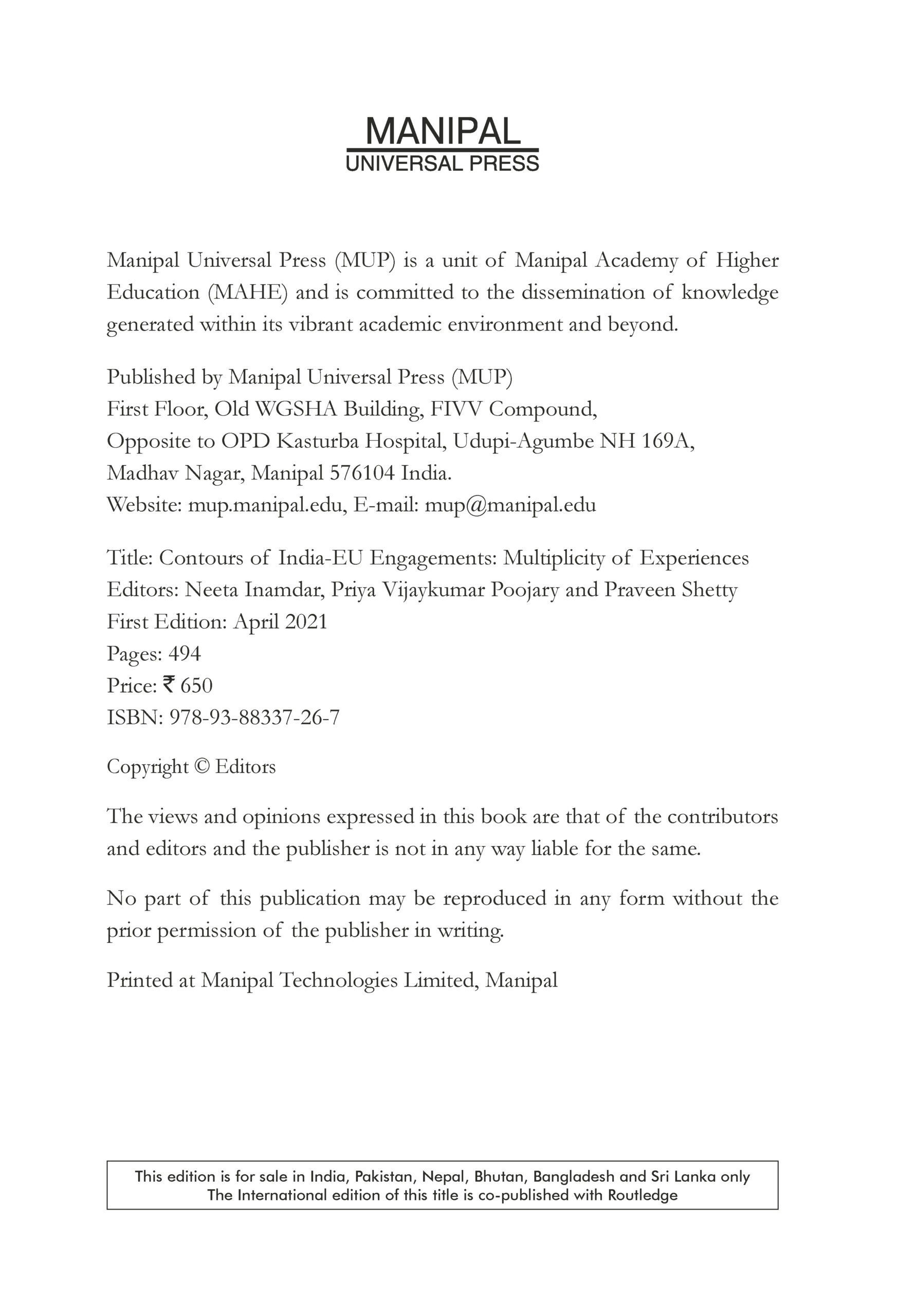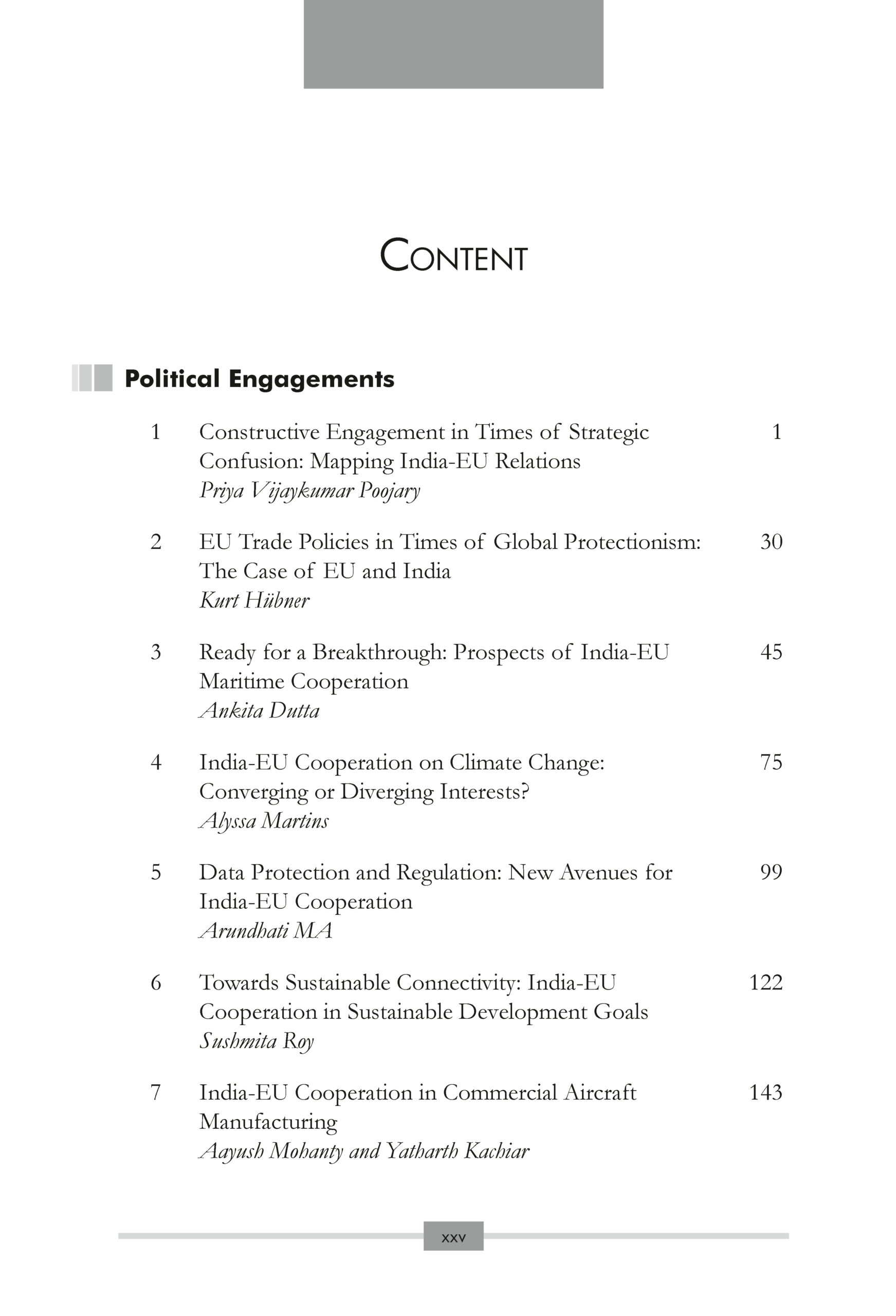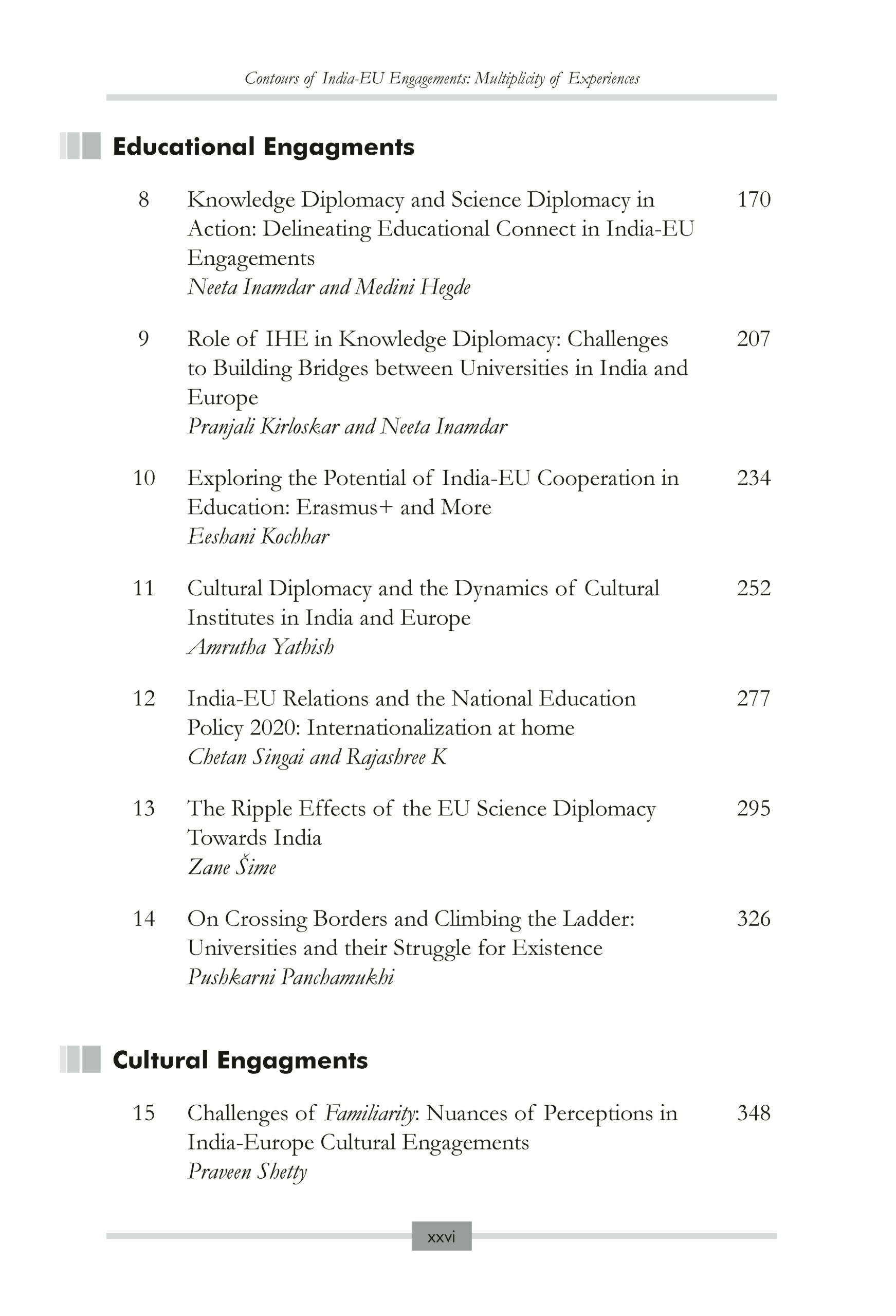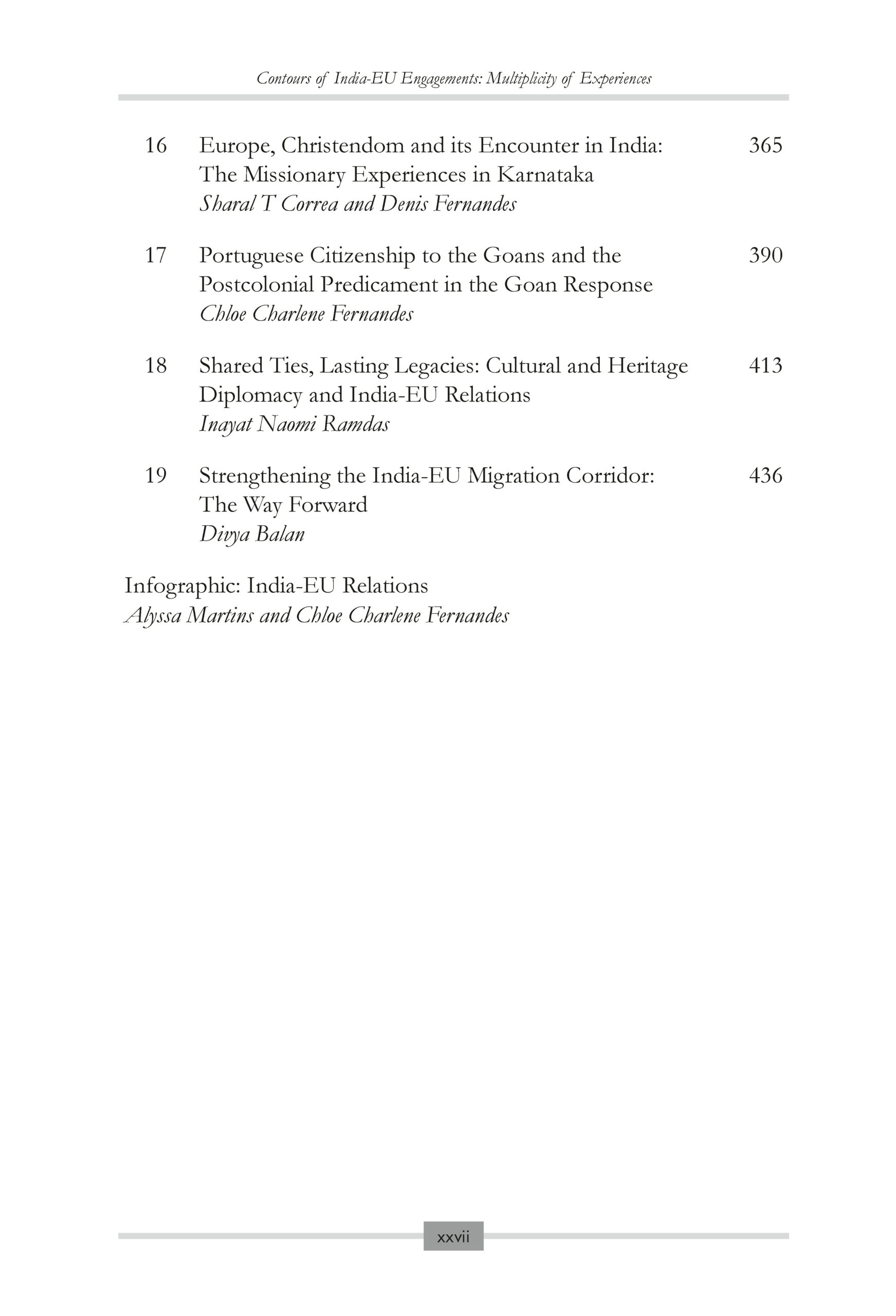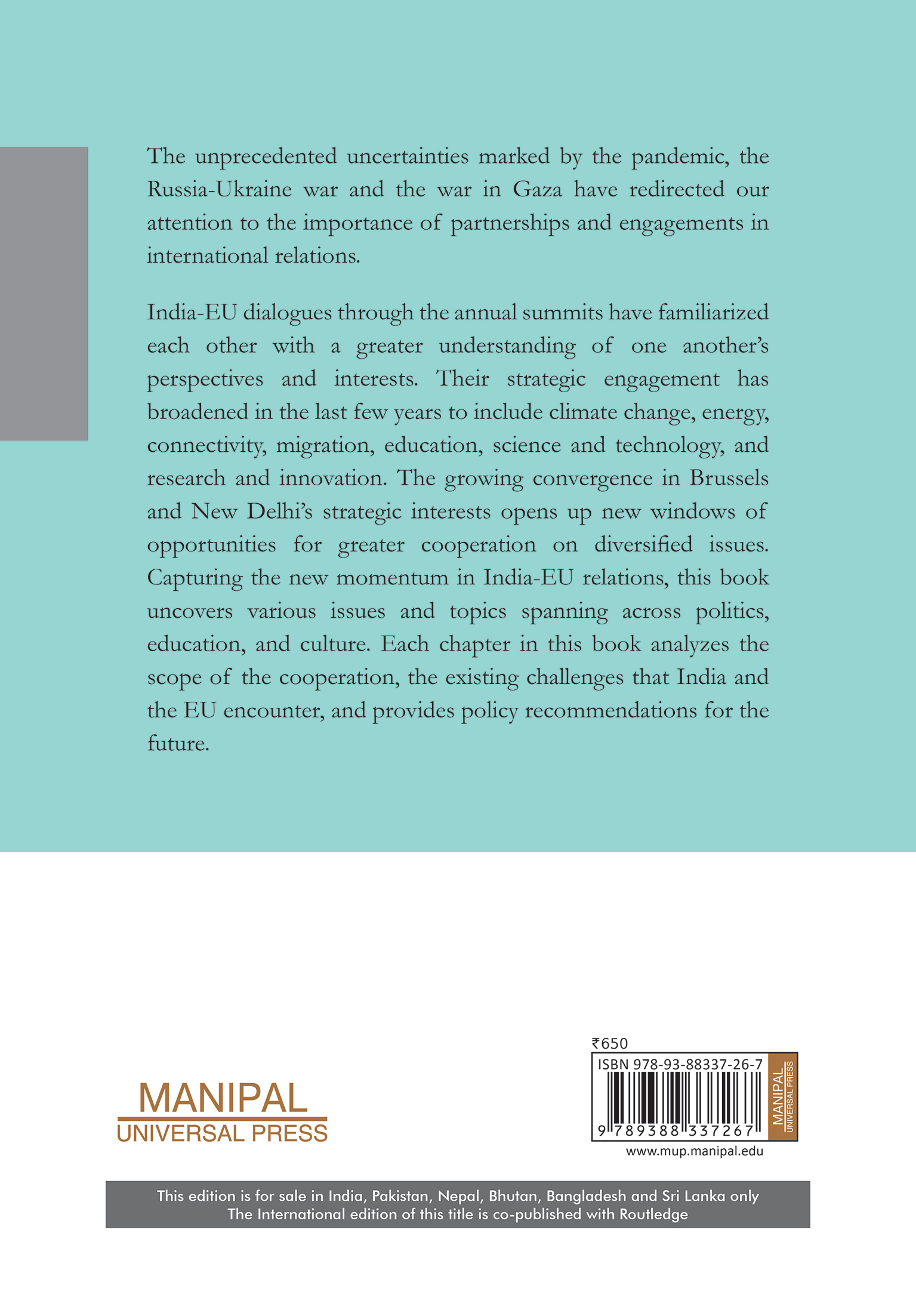Contours of India-EU Engagements: Multiplicity of Experiences
₹650.00
Editors: Neeta Inamdar, Priya Vijaykumar Poojary, Praveen Shetty
The unprecedented uncertainties marked by the pandemic, the Russia-Ukraine war and the war in Gaza have redirected our attention to the importance of partnerships and engagements in international relations.
India-EU dialogues through the annual summits have familiarized each other with a greater understanding of one another’s perspectives and interests. Their strategic engagement has broadened in the last few years to include climate change, energy, connectivity, migration, education, science and technology, and research and innovation. The growing convergence in Brussels and New Delhi’s strategic interests opens up new windows of opportunities for greater cooperation on diversified issues. Capturing the new momentum in India-EU relations, this book uncovers various issues and topics spanning across politics, education, and culture. Each chapter in this book analyzes the scope of the cooperation, the existing challenges that India and the EU encounter, and provides policy recommendations for the future.
Interested readers may write to us at mup@manipal.edu about purchasing the book.
| International Edition available on |
South Asia Edition available on |
| Author | |
|---|---|
| Format |


